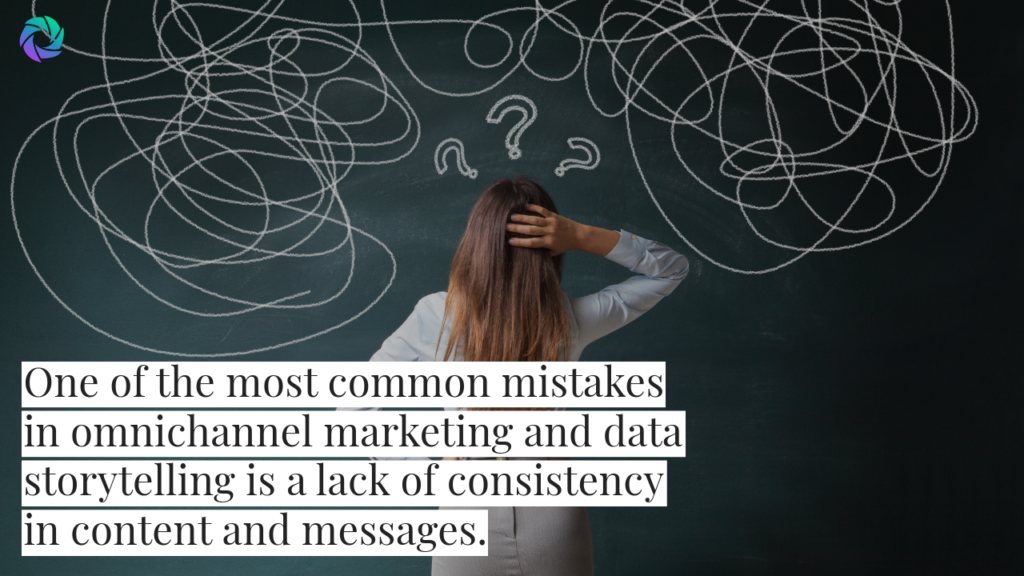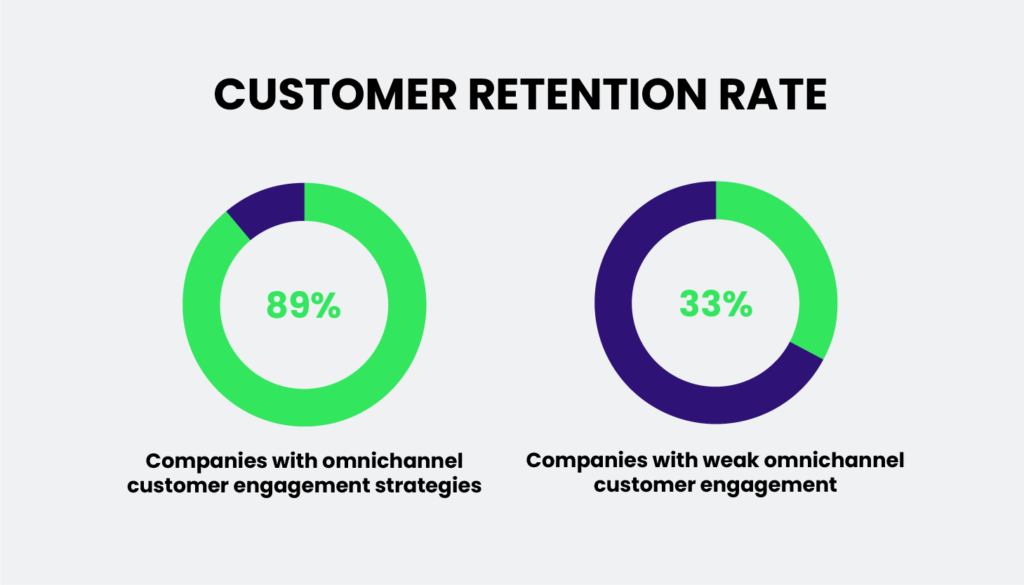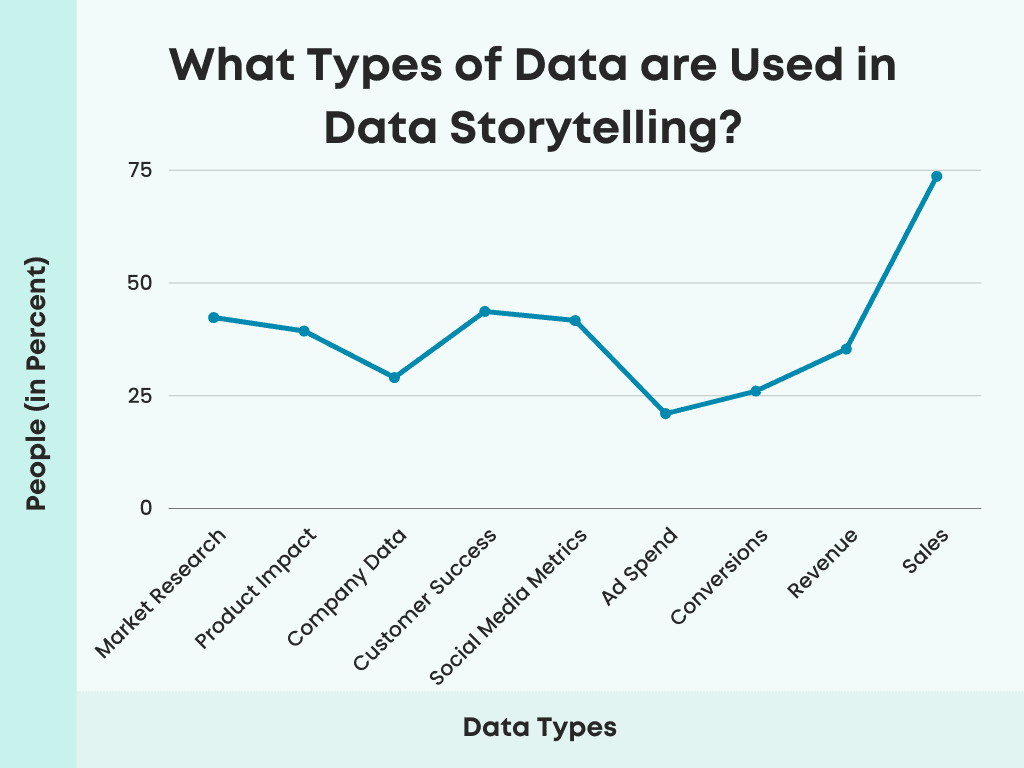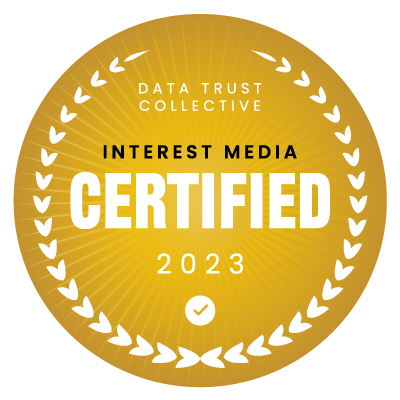
The Power of Omnichannel Marketing with Seamless Data Storytelling
- Omnichannel marketing uses sophisticated targeting and data analytics to connect with customers at every touchpoint, delivering content that builds on previous experiences.
- Data storytelling helps marketers discover patterns, trends, and KPIs to confirm an unbiased hypothesis to build a narrative for your audience.
- Create a compelling case for your customers to buy your product through informative insights, enlightening visuals, and data to provide context and proof.
In this article:
- Understand what omnichannel marketing is and why it’s the future of digital marketing and will be expected as the norm by consumers.
- Learn the components of data storytelling and how to use it to understand the behavior of your customers, as well as how to leverage its power.
- Discover how to use data storytelling to create a compelling narrative to influence the behavior of your audience and encourage them to purchase your products or services.
- Interest Media is an omnichannel marketing solutions provider. Partner with Interest Media to maximize your omnichannel marketing strategy.
Omnichannel Marketing: Why it’s the Future
“Brands with a top omnichannel customer engagement see a 9.5% yearly increase in annual revenue, compared to 3.4% for poor omnichannel brand strategies,” – Digizuite
Omnichannel marketing is a process that delivers marketing messages to consumers throughout various physical and digital spaces. Reaching customers as they move across different screens such as mobile, tablet, desktop, and television.
For example: physical stores, a website, email, SMS (text messaging), push or in-app notifications, newsletters, television, social media, and more.
The essence of an omnichannel marketing strategy involves delivering consistent messaging across all marketing channels. An integrated “handoff” of messaging between channels that builds on previous experiences and doesn’t repeat.
It’s seamless for the customer and picks up from wherever they left off, no matter the device. In the age of personalization, this experience is something customers are coming to not only demand but expect.
Omnichannel marketing differs from multichannel marketing. The latter used a “wide net approach.” It involved digital, traditional, and other channels.
In contrast, Omnichannel marketing uses a very segmented and targeted approach. It focuses on a particular customer segment. Omnichannel marketing is informed by first-party and third-party data to deliver personalization to the chosen segment or individual customer. Omnichannel follows a customer across various devices and platforms. It delivers personalized messaging in the right context at the right time.
Interest Media specializes in omnichannel marketing solutions. Scroll further below in this article to learn how you can skyrocket your omnichannel marketing strategy by partnering with Interest Media.
Introduction to Data Storytelling
“As of 2023, Data Storytelling grew by 233 percent over the past five years,” – Leap Mesh
Humans are hard-wired for stories. That’s how we recorded daily life and imparted vital information for survival. Though storytelling changed since the Cro-Magnon era, the psychological power of story remains a compelling force today.
So what is data storytelling? In short, it is the use of complex data and analytics to develop a compelling narrative. The information gleaned from this data is used to tell your story to a particular audience to both inform and influence them. Data storytelling puts a human perspective on the increasingly complex volume of information that confronts us in the digital era and brings us back to our evolutionary roots through simple stories.
3 components of Data Storytelling
Data storytelling is comprised of three key components:
1. Data.
This is complete data that has been thoroughly analyzed using descriptive, diagnostic, predictive, and prescriptive analyses to understand its full picture and context. Your data should help you define your audience (or audience segment) and their intent and provide the most important insights. What you glean from this data will inform you toward creating a story that aligns with what’s most important to your target audience.
Next, let’s look at how to find your most important audience insights. With marketers now capable of capturing loads of data, the challenge comes in sifting it down to what’s most important.
Another problem is that data can produce multiple insights. The simplest rule of thumb to use here is to use your customer’s problems as a benchmark. If the data doesn’t cater to your customer’s most important problems – that data isn’t important for your storytelling.
2. Narrative.
A narrative, or storyline, communicates the insights gleaned from the data. The narrative also provides the context surrounding the data and supports its claims. The narrative communicates the purpose of the story. The narrative must inspire the audience and recommend actions.
3. Visuals.
The easiest way to communicate data to your audience is through visualizations (charts, graphs, etc.). Use visuals to bring attention to the most valuable insights. Use visuals to evoke emotions. Use visuals to highlight the benefits and contrast differences.
How to Craft a Compelling Narrative Using Data
“Stories are 22 times more memorable than facts alone,” – Leap Mesh
One goal of “data storytelling” is to use your analysis to discover the problems your audience is trying to solve. It may be that different segments of your audience are trying to solve different problems. Therefore, focus on the problem one segment of your audience is trying to solve and create a narrative for that specific segment. Different segments of your audience will have different narratives crafted to solve their particular problem.
Example: Hypothetical pet product
As an example, let’s consider a hypothetical company that sells a line of handmade, personalized ID tags for cats and dogs. These are hand engraved, which makes each one unique.
The Audience
Their audience segment of 18 to 23-year-olds is where the biggest drop in sales has been occurring.
The Problem
Data shows that this segment is showing a lot of interest in the product but a significant amount of prospects aren’t buying. The data shows they are showing interest in competitors who have a focus on environmental friendliness. Our hypothetical company does use sustainable products but has failed to mention it in any advertising or product copy.
Crafting a Story
Now you craft a narrative for this audience segment that emphasizes the environmental friendliness and sustainability of this product. These points should be further emphasized through visuals. A secondary emphasis can also be directed at addressing any other significant pain points you glean from your data that this segment has.
Leverage storytelling basics
Don’t forget that a story has a form that has long been established. In its simplest form, a story has a beginning, a middle, and an end.
You need to plant the “hook” – the part that grabs the reader’s attention – as early as possible but no later than the 10% mark. Otherwise, you’ll lose them. This might be something surprising or humorous.
The “first plot point,” which occurs no later than the 25% mark, is where something BIG better happen. By this point, you need to tell your prospect how your product or service is going to solve their problem.
Sometimes stories have a “twist” in the middle. So a perfect place to put a surprising fact is at the 50% mark. This maintains their interest.
Technically, the best stories have a rising action that builds tension (that’s what holds their attention throughout), reaching a climax at the 88% mark. This is the ideal place to convince your prospect to purchase your good or service.
The last part is the “resolution” which happens toward the end. This is where you reiterate the benefits for your prospect and encourage them to purchase to solve their problem and achieve happiness.
Fine-tuning your narrative
In the first draft of crafting your narrative, you’ll address the primary point of concern of your target audience. If time and space allow, you may be able to address other significant pain points. However, these should not overshadow the main point or take away too much attention from it.
What’s most important in second drafts and fine-tuning your narrative is to prompt your audience to take your desired action (such as purchasing your product).
In the case of our hypothetical pet product company, we might say that the use of these environmentally friendly dog ID tags prevents the use of materials that end up in landfills or create pollution through their manufacturing processes. It encourages others to purchase the same. It might also encourage other companies to compete by also offering environmentally friendly products. If it creates jobs for local small businesses, perhaps that could be mentioned. The main point is to get into the mindset of your target audience and craft messages the data suggests they want to hear.
If data can show your materials are 50% more sustainable than traditional materials, show that via visuals. Visuals + data can make the strongest impact.
Revise for clarity
This is the last step when you think you have your final draft. Most important of all when revising your drafts and editing, make sure that your message is always clear and concise. Focus on the heart of your message and only what is relevant. Less is often more. Too much information or fluff can distract from the main point. Make sure to focus your audience’s attention on what matters most.
Common Omnichannel Marketing and Data Storytelling Mistakes

Common Storytelling Mistake – Interest Media
One of the most common mistakes in omnichannel marketing and data storytelling is a lack of consistency in content and messages. It can make your brand appear to have a split personality as someone moves across devices or channels.
Why does this happen? Most often, it is because your marketing and/or content creation teams aren’t communicating or aren’t on the same page. Each team may be creating content in isolation. When using data to inform your narrative, your content creators must work from the same findings and conclusions. It may be helpful to work from an outline.
Granted, this can also happen because each channel can be slightly different. For example, on social media, each platform has its own tone and culture. For this reason, unique marketing strategies are often developed for each channel, and this is wise.
However, even though the tone of content can vary by channel, the marketing message should be the same. The person telling the story has the same values. The personality is still the same, it may be more subdued or animated depending on the audience.
Think about when you tell the same story to different audiences. You might adjust the tone differently when speaking to your spouse, or a friend, or your boss, or a colleague, or a child. The tone and language may differ, but it is the same story with the same takeaway. This is the way marketers should look at it when they are trying to communicate the same message across various channels.
“Solid omnichannel brands witness a 7.5% yearly decrease in cost per contact,” – Digizuite
Looking for an Omnichannel Marketing Solutions Provider? Partner with Interest Media
Interest Media offers a complete Omni channel solution. Deliver your marketing messages across email, display, push, SMS, and more.
With specialized tools that are built for performance, Interest Media delivers thousands of exclusive offers, derived from the internet’s most valuable consumer verticals, to publishers seeking increased earnings.
Interest Media offers a consumer-centric advertising solution that utilizes first-party data combined with real-time optimization that maintains a positive user experience while driving higher earnings.
Deliver an omnichannel marketing solution with Interest Media
Powered by an internally owned and operated network of web properties, leveraging exclusive first-party data, Interest Media puts the biggest brands in front of their ideal consumers with a unique, audience-centric, omnichannel solution.
Advertisers:
Interest Media allows you to create meaningful interactions with actively engaged audiences that have confirmed their intent and fit your precise consumer profile. These authenticated customers have been pre-qualified and are ready to engage with your brand.
Publishers:
Interest Media enables publishers to create powerful and unique ways to introduce their audience to exclusive offers from the brand advertisers who are most likely to induce meaningful action from them, thus creating unparalleled revenue opportunities at an unlimited scale.














